Why Mycelium?
Did you know? Mycelium Fungi can be safe and healthy!
Throw out that bacon and shelf the soya chunks!
It’s time to say hello to some lean ‘n mean delicious protein!
Yes, even though it’ll take you a few seconds to ‘digest’, thanks to modern science, plant-based burgers and imitation eggs are now the foods of the future!
Here are some fun, unknown facts about mycelium fungi!
It enhances plant-based products by making them natural and nutritious
Mycelium fungi contains up to 60% protein (dry weight) and 12% fiber, making it a highly nutritious source of plant protein. It not only makes the food you eat healthier but also enhances the taste, aromas and flavours. It is also much more sustainable for the environment as it makes for a great meat substitute, which helps reduce the emissions of harmful gases that are emitted from the breakdown of meat, not to mention it is much healthier for the human body.
Mycelium can be incorporated into a number of food fermentation methods
One such common method being grain spawn, also referred to as a Solid State Fermentation, or SSF. Using natural fermentation methods, mycelium can be used to create novel ingredients that help solve many of the food industry’s biggest challenges.
It can be used as a replacement for animal proteins
Since the fungi mycelium is a fibrous material, it can be transformed into a meat-like form in which the fibres can resemble animal muscle fibres, making it a fundamental ingredient in mycelium-based foods and a great alternative to meat. Plant-based raw materials with mushroom mycelium help replicate whole-cut meat analogues, which are minimally processed, allergy-free, and a complete source of nutrition.

Versatility of mycelium used as a growth medium for cellular meat
Cellular meat or cell-based meat is meat that is produced using animal cell culture technology. This involves producing meat from animal cells using a combination of biotechnology, tissue engineering, molecular biology (this is where mycelium comes in) and a combination of synthetic processes. Mycelium acts as a growth culture agent or medium to help create this faux meat.
Mycelium can be incorporated into a number of food fermentation methods
One such common method being grain spawn, also referred to as a Solid State Fermentation, or SSF. Using natural fermentation methods, mycelium can be used to create novel ingredients that help solve many of the food industry’s biggest challenges.
It enhances plant-based products by making them natural and nutritious
Mycelium fungi contains up to 60% protein (dry weight) and 12% fiber, making it a highly nutritious source of plant protein. It not only makes the food you eat healthier but also enhances the taste, aromas and flavours. It is also much more sustainable for the environment as it makes for a great meat substitute, which helps reduce the emissions of harmful gases that are emitted from the breakdown of meat, not to mention it is much healthier for the human body.
It can be used as a replacement for animal proteins
Since the fungi mycelium is a fibrous material, it can be transformed into a meat-like form in which the fibres can resemble animal muscle fibres, making it a fundamental ingredient in mycelium-based foods and a great alternative to meat. Plant-based raw materials with mushroom mycelium help replicate whole-cut meat analogues, which are minimally processed, allergy-free, and a complete source of nutrition.

Versatility of mycelium used as a growth medium for cellular meat
Cellular meat or cell-based meat is meat that is produced using animal cell culture technology. This involves producing meat from animal cells using a combination of biotechnology, tissue engineering, molecular biology (this is where mycelium comes in) and a combination of synthetic processes. Mycelium acts as a growth culture agent or medium to help create this faux meat.
Mycelium Applications:
Where can mycelium be used in the F&B Industry?
It can be used in Meat analogues – Mycelium can make for a lot of delicious meat-replacement food varieties that go easy on your body (lesser processing, toxins and allergens) and the environment (lesser carbon dioxide emissions).
Baked goods – Mycelium is used as a yeast agent to bake bread and other baked goods. 3% wheat, oat, barley and millet flour enriched with mycelium is optimal for making bread and pasta from wheat flour.
Snacks industry – Mycelium can also be implemented in producing sufu, kojic rice, soy sauce, tempe, and several other snack products.
Beverages industry – In the alcohol industry, mycelium helps bring about the process of fermentation of sugar by an enzyme called zymase, which, in turn, produces alcohol like beer and wine.
Noodles and Pasta – Can be used in the production of carbon-neutral, high-protein pasta that doesn’t adversely affect those allergic to wheat pasta.
